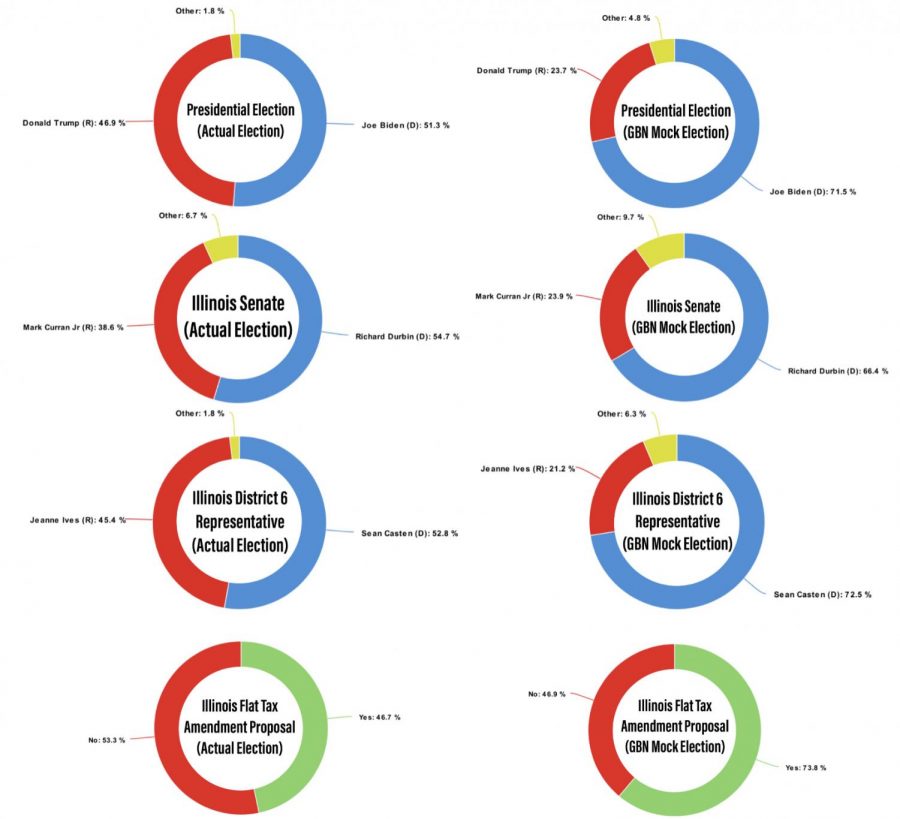Mock Election at GN vs Actual Election
As America begins its transition from one presidential administration to the next, it is worth looking back on how the people of the nation decided on the future of American politics. In November, tens of millions of ballots were cast and counted in national and state elections. In fact, according to electproject.org, the 2020 election had the highest voter turnout of any election in United States history with a record 159.6 million voters showing up to ensure their voices were heard. Here at Glenbard North, over 1,100 students also had an opportunity to express their beliefs through the school-run mock election.
On October 27, GN students were given time to research and vote on each candidate and issue on the ballot. First, the students were asked to vote for a presidential candidate. The results showed a clear victory for Democratic President-Elect Joe Biden, with him winning 71.5% of the vote. Republican President Donald Trump attained 23.5% of the vote, and a few third party candidates also received some votes.
The mock election, however, was not limited to just the presidential race. Illinois-specific issues were also included on the ballots. The mock senatorial race was won by Democrat Dick Durbin with 66.4% of the vote, followed by Republican Mark Curran with 23.8%. Democrat Sean Casten beat Republican Jeanne Ives in the mock election for Illinois’s 6th Congressional District with 72.5% of the vote to her 21.2%. Finally, the proposed amendment to the Illinois State Constitution to implement a flat tax system passed with 74.6% of students voting “Yes” and 25.4% voting “No.”
Disregarding the percentages, Glenbard North’s mock election results lined up closely with the actual results with one exception. Even though nearly three quarters of students voted in favor of the proposed fair tax amendment that would have based income tax rate on the person’s income, the state of Illinois voted to keep the current flat tax rate. The bill was backed mainly by liberals and opposed strongly by conservatives, so it came as a surprise that historically progressive Illinois voters decided against its passing.
Of course, since Glenbard North’s mock election holds no power over the actual election process, it raises the question: Why should a high school hold a mock election? Civics Club sponsor and social studies teacher Erica Bray-Parker says, “It’s like Driver’s Ed. Would you want kids out there driving without doing Driver’s Ed.? Except that we, the Social Studies Department, only get one day every two years to ‘train’ students and give them the real life experience.”
Ultimately, the goal of the mock election is to prepare current students to exercise their civic duty when they turn 18. However, another important aspect of the mock election is voter education. Social Studies Department chairperson Kevin Coon said, “We want our students to look away from the TV ads which focus on negative ads and play on people’s fears. Often these ads use quotes and statistics that are out of context… The focus here is not just to vote, but to cast an educated vote.”
Your donation will support the student journalists of Glenbard North High School. Your contribution will allow us to pay for training sessions and cover our annual website hosting costs.



